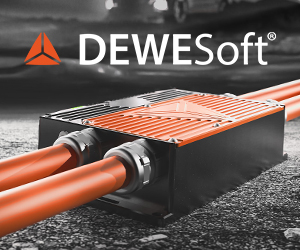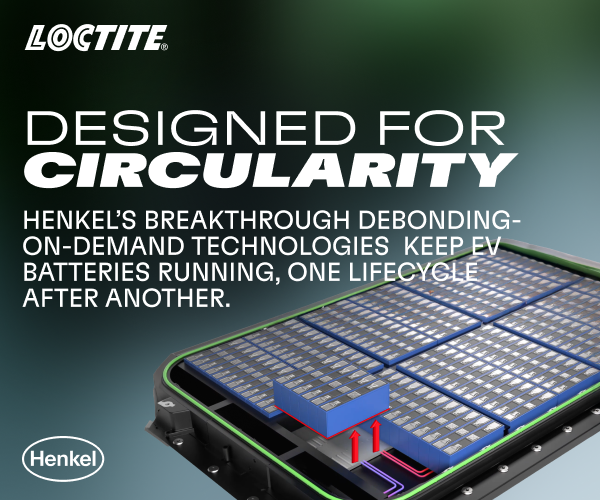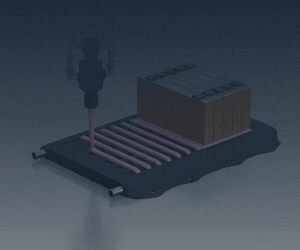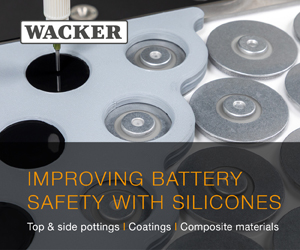Fast charging

(Image courtesy of Atlante Energy)
The fast and the furious
Nick Flaherty looks at the development of ultrafast-charging stations around the world
Drivers of EVs are often frustrated by the speed of charging. While home chargers use AC at power rates to 22 kW, fast charging covers direct current (DC) charging at a power of 30 kW. Above that, up to 200 kW, ultrafast charging, also called extreme fast charging, is a less standardised term for a type of fast charging. It refers to speeds of EV charging comparable with those of traditional cars, generally understood to be 10 minutes or less.
This ultrafast charging, which depends on two factors – whether it can accept high charging current rates and whether the charging facilities can provide the high-power input – is driving a new class of power conversion topologies.
The implementation of fast chargers needs a combination of high-power technologies. Inside the vehicle, the high-power level 3 (L3) DC charger bypasses the onboard charger of the EV and directly charges the battery via the EV Battery Management System.
Level 4 is typically for trucks and off-road equipment with megawatt charging levels.
Outside the vehicle, the high-power charging unit has to provide power at up to 1000 V with high currents. This has to take into consideration the cooling of the charger and the connecting cable, and also the infrastructure of the wider charging station.
The Tesla Supercharger V3 for example reaches 250 kW for the Model 3 and is planned to be upgraded further to 500 kW. The Porsche Taycan achieves a maximum fast-charging power of 270 kW such that the 93 kWh battery can be recharged from 10% to 80% in 19 minutes. GAC AION EVs offered a 6C fast-charging option with a maximum power of 480 kW, sufficient to raise the battery state of charge from 30% to 80% in 5 minutes.
Across the charging station, the demand for high-power charging can place significant pressure on the electricity grid, and there are studies now showing how to address this (see below).
Higher power DC chargers are typically built with a modular architecture, stacking power blocks of 15 to 75 kW (and above) in a single cabinet.

(Image courtesy of onsemi)
Level 3 DC fast charger
Because L3 DC fast chargers must convert a three-phase alternating current (AC) input voltage to DC, they therefore include an AC-DC Power Factor Correction (PFC) front-end with an isolated DC-DC converter to interface the PFC output to the EV’s battery. Multiple power modules are often paralleled to achieve higher output power.
Digital power control architectures and silicon carbide (SiC) MOSFET power transistors and diodes enable designs that offer higher system efficiency and integration, high power density, advanced control loops and increased flexibility in various power topologies that are optimised for DC fast-charger applications.
The L3 DC charger consists of a three-phase AC mains feeding an input EMI filter and surge protector and an input contactor or circuit breaker. This feeds a front-end PFC/active rectifier with a bulk DC link capacitor for the high-voltage DC bus, typically 700–1000 V DC. This feeds an isolated DC–DC converter that regulates to battery voltage and provides galvanic isolation.
For a battery voltage of up to 1000 V, a 250 kW fast charger has to handle 250 A. For a 400 V bus, that same 250 kW charger needs 625 A, which means thicker, heavier cables, more losses and more cooling required.

(Image courtesy of Texas Instruments)
Power architecture
The aim for the PFC is to smooth out variations in the supply to achieve consistency of over 0.98 (where the maximum is 1) with low total harmonic distortion (THD) of under 5–8% to meet grid standards. This has to handle a wide input AC range of typically 380–480 V AC three-phase with high reliability, low input current ripple and good thermal behaviour.
In the most common two-stage converter, the PFC produces a regulated high-voltage DC bus (≈750–1000 V), then isolated DC–DC converter(s) are used to step to battery voltage. This has an easier control system and allows for modularity. Isolation can also be provided in the second stage with good EMI separation. However, the two conversion stages mean more losses and a slightly lower theoretical peak efficiency, but each stage can be optimised.
A single converter performs the PFC from the grid with isolation and regulation in one stage, typically using a matrix converter or bridgeless high-frequency isolated topology. This potentially has higher efficiency and fewer power stages but with a more complex control and is harder to meet standards and reliability targets at 250 kW. This makes it less common for large public chargers.
For a 250 kW commercial charger, the two-stage approach is the pragmatic industry standard. However, three-level topologies are becoming more popular as the power levels increase beyond 250 kW. This allows the same transistors to be used to achieve the higher conversion.
A three-phase two-level active pulse-width modulation (PWM) rectifier uses a full bridge converter topology with silicon IGBT or SiC MOSFET switches with a DC link capacitor and active control of AC currents. This gives good control of the power factor and the THD with straightforward control of the current loops and a relatively low component count.
However, this has higher switching losses if using silicon IGBTs at high frequency and large dv/dt stress on the DC link. Using SiC MOSFETs reduces losses and size.
A three-level Vienna rectifier is an alternative for the PFC front-end. This uses a three-level neutral-point-clamped style rectifier configured for three-phase PFC. Using three levels reduces the switching stress and the input current ripple with lower EMI and lower blocking voltage per device. This is favoured for 100–500 kW class chargers. However, it is slightly more complex balancing the zero-switching point.
When compared with a boost-type PWM rectifier, the Vienna topology uses multilevel switching (three levels), which reduces the inductance value requirement and reduces the voltage stress on the switches by half. This improves efficiency and power density.
A Vienna rectifier uses hysteresis-based controllers, which are more complex to design. Sine triangle-based PWM has also been shown to work for Vienna rectifier control. Furthermore, with the development of an average current control model, the adoption of the rectifier has accelerated. Still, this type of control can be quite challenging to design because of the need to execute multiple loops, together with fine-tuning and switching at higher frequencies.
There are several types of Vienna rectifiers, but the most popular for L3 charging stations is the Y-connection variant (see below) .
A bridgeless interleaved three-phase PFC/interleaved boost stage uses an interleaved boost PFC per phase or per leg to reduce input ripple. This reduces the ripple for improved THD, with the possibility of thermal spreading if implemented as parallel modules in a modular charger design. However, this needs more inductors and components with more complex parallel design.
Onsemi has developed a reference design that covers a wide output voltage range, which is able to charge EVs with both 400 and 800 V batteries, and is optimised for the higher voltage level.
The input voltage is rated for EU 400 VAC and US 480 VAC three-phase grids, and the power stage delivers 25 kW over the 500–1000 V range. Below 500 V, the output current is limited to 50 A, derating the power in alignment with profiles of DC charging standards such as CCS.
For a modern 250 kW DC fast charger, SiC MOSFETs are the preferred choice for both the front-end PFC and the isolated DC–DC (or at least on the primary side of the DC–DC). They enable higher efficiency, smaller magnetics, reduced cooling and simpler bidirectional operation – all key for compact, high-power chargers. Silicon IGBTs remain reasonable where initial unit cost is the overriding constraint or for conservative, legacy module reuse.

(Image courtesy of Microchip)
Development process
Feasibility studies helped validate the initial requirements and assumptions of the design, integrated as part of the system design that encompasses hardware, software, thermal management and mechanical design, prototyping and validation. All the essential system variables and most critical compromises and trade-offs for the solution happen during the feasibility studies.
Two of the main design activities are the power simulations with SPICE models and the control simulation using MATLAB and Simulink.
Power simulations are crucial to confirm the assumptions on working voltage and currents, losses, cooling requirements, selection of power and passive components, among others. Once an implementation plan is ready, control simulations, including the power parameters, are carried out to confirm that the control loops are effectively executed with the power design.

A Vienna rectifier (Y-connection) topology for EV charging stations
(Image courtesy of Texas Instruments)
Control processor
The control processor is a key component for the fast charger to handle the conversion algorithms. The controller is usually a microcontroller that has been optimised for real-time processing from companies such as Texas Instruments, Microchip, Infineon and STMicroelectronics.
For example, the TMS320F28004x real-time microcontroller from Texas Instruments can be used for controlling a Vienna rectifier.
The controller is part of the C2000 family with additional features and software libraries that make development of a Vienna rectifier topology smaller, lower cost and easier.
Actuating the signals for the control of the power devices on the Vienna rectifier can be challenging, especially when due to size constraints the switching frequencies are over 100 kHz. The flexibility in the PWM module on the controller allows designers to generate these signals easily, while an on-chip trigonometric math unit (TMU) accelerates trigonometric operations in the control loop.
This TMU is similar to a floating-point instruction set and is an IEEE-754 floating-point math accelerator tightly coupled with the CPU. However, where the floating-point unit provides general-purpose floating-point math support, the TMU focuses on accelerating several specific trigonometric math operations that would otherwise be quite cycle-intensive. These operations include sine, cosine, arctangent, divide and square root.
In many of the control schemes for a Vienna rectifier a rotating reference frame type of control structure is used. These schemes rely heavily on computation of sine and cosine values. With the faster switching frequencies in Vienna rectifiers, it’s even more important to compute these routines quickly. For example, compared with MCUs that only have a floating-point unit, the sine instruction with the TMU instruction set can execute a sine instruction in four pipelined cycles, compared with up to 41 cycles.
The chip also includes a Control Law Accelerator (CLA) as a secondary core that is available to offload Interrupt Service Routine (ISR) control tasks from the main controller core. This can be used as a parallel processing unit to run the control loop faster, thereby enabling higher switching frequency control of the Vienna rectifier.
The CLA can enable control loops for Vienna rectifiers of up to 200 kHz using parallel processing on 100 MHz devices such as F280049. With a device rated at over 200 MHz, up to 400 kHz control loop frequencies are feasible with control algorithm code still written in the C high-level language. With assembly code, even higher control loop frequencies can be achieved with C2000 real-time MCUs.
Other blocks also help to simplify the fast-charger design.
The Analogue to Digital converter (ADC) enables highly accurate sampling and measurement resulting in better THD, while an integrated comparator subsystem (CMPSS) integrates protection for overcurrent and overvoltage without the use of any external circuitry, thus making the board smaller and lower in cost. A crossbar architecture in the chip means trip events from multiple sources such as the CMPSS and I/O ports are available to flag gate driver faults in a quick and easy manner, again without need for external logic or circuitry.
As AC signals are sensed for the voltage and current, the first step in using these values for control is removal of the DC-offset. Even for non-AC signals, removal of DC-offset can be an important first step to meet system voltage regulation requirements. An ADC Post Processing Block (PPB) enables automatic removal of the offset from the sensed signal in hardware to allow the control loop to directly read a signed register value. This saves cycles used to load offsets and subtract offsets from the critical path in the Interrupt Service Routine (ISR).
Furthermore, the ADC PPB block can save cycles by incorporating offset subtraction in hardware. For example, on the Vienna rectifier, a minimum of eight signals are needed to be sensed with offsets subtracted (three voltages for AC input, three currents for AC input and two output bus voltages). Operations to read a single signal require reading the ADC, reading the offset, subtracting the offset, scaling the result and storing in memory. This can take up to 12 cycles, even with optimised assembly code.
With the PPB, it can be reduced to eight cycles, marking a 33% improvement in execution of these operations. The CPU load for computing a Vienna rectifier control loop can also be extensive involving reading of eight signals (in addition, oversampling may require even more CPU bandwidth), execution of four controllers, and updating the PWM. For example, even with the TMU and the ADC PPB for a 50 kHz control loop on a 100 MHz device, the CPU load is ~47%, out of which 37% is for the main control ISR (50 kHz) and ~8.5% is for the instrumentation ISR at 10 kHz.
The Vienna rectifier is a three-phase power topology; therefore, it requires multiple comparators and references. For example, just to implement current protection, two op-amps, six comparators, and additional resistors and capacitors may be needed to implement a simple overcurrent trip for all three phases.
The CMPSS is connected to the PWM module and can enable fast tripping of the PWM. The TMS320F280049 saves board space because the rectifier design can take up to five CMPSS windows on the TMS320F280049 MCU: three for current sensing each of the three phases and two for sensing on the DC bus.
The fast-charging power of EVs sold in China has increased up to fourfold from 30–120 to 60–480 kW over the past five years

(Image courtesy of the University of Wuhan)
Modelling fast-charging stations in China
China expanded its charging infrastructure to 11.4 million chargers, including 3.3 million public chargers, by September 2024, achieving a ratio of one charger for every ∼2.5 EVs, with the charging power rising significantly in recent years. The increases in both EV charging power and numbers of charging facilities could pose challenges for regional power systems.
A research team from China and the US analysed real-world charging data from over 15,000 EVs at fast-charging stations across 10 districts in Beijing using data from the Chinese Big Data Alliance of New Energy Vehicles (NDANEV) Open Lab. The team established scenarios for current and future EV specifications and charging parameters, considering factors such as charging power, battery energy and charging times.
The modelling by the team from Huazhong University of Science and Technology, Wuhan and the Paulson School of Engineering and Applied Sciences at Harvard challenged the assumptions of large fast-charging systems.
They found that rather than doubling charging power leading to double the station load, the study showed that larger stations with more chargers experienced a relatively modest peak power increase of less than 30% when fast-charging power was doubled. This is because shorter charging sessions are less likely to overlap. For example, in a simulation of an airport charging station, as the maximum EV charging power increased tenfold from scenarios S1 to S7, the peak load increased by only a factor of 4.90.
The researchers also investigated the situation when there is insufficient power capacity at charging stations. A dynamic waiting strategy can effectively decrease peak loads by delaying some charging sessions. For instance, at the airport EV charging station, with a total power capacity of 120 kW times the charger number, it can satisfy ultrafast-charging demands across the scenarios up to 2030 using only this strategy, with a reasonable increase in waiting times.
“Just a few minutes of dynamic waiting or the use of energy storage with a high power-to-energy ratio can effectively manage surges in station loads,” said Yang Zhao, a researcher at Wuhan University.
This technique is based on monitoring the whole process and dynamic control, with new arrivals added to a waiting list in order of their arrival. The readiness of the station to charge each vehicle in turn on the list is decided based on the existing load states and the maximum load constraints of the station, and any charging sessions that would increase the load beyond the constraint will be delayed to keep the load curve below the station maximum.
Energy storage can buffer peak loads, but the cost is a major consideration. The unit cost of lithium-ion battery energy storage is approximately four times higher than that of distribution transformers in China but does not require expensive grid capacity expansion and enables more flexible installation.
The dynamic control of the energy storage monitors the activity to identify low-power periods to charge up from the grid so that it is ready to provide a high-power boost at busy times.
Overall, the researchers suggest that deploying large ultrafast-charging stations with chargers between 350–550 kW in high-demand regions could be a viable solution to meet the surging charging demands of EVs in China.

Looking forward
Demand for fast charging by EV users is increasing significantly as people look for a 5–10 minute waiting time. This is made possible by the latest architectural and component developments, with techniques such as Vienna rectifiers and real-time microcontrollers now allowing modular, cost-effective charging station designs.
The proliferation of fast chargers also puts a significant strain on the electricity grid, so techniques to manage the flow of energy at charging sites is welcome.
All these elements indicate maturing of the fast-charger technology and infrastructure to boost the rollout for e-mobility vehicles.

(Image courtesy of Schaltbau)
Fast-charging contactor
The contactor is a key element in a fast-charging system, acting as a circuit breaker.
For example, the Eddicy C803 bidirectional contactor from Schaltbau has a low and over lifetime stable contact resistance of about 100 µΩ. Embedded in a correctly dimensioned system structure, consisting of busbars and contactors, it can help reduce the need for additional cooling and solve thermal management challenges.
The switching voltage of 1500 V and high switching currents of 500 A are combined with a snap-action auxiliary contact with silver material. The auxiliary contact operates with a minimum signal level of 5 V/10 mA and connects via a 5-pole connector. The monostable magnetic drive supports a 12 or 24 V DC control voltage with internal and external pulse width modulation (PWM) options, ideally current controlled.
Weighing under 0.5 kg, the contactor is aimed at inverters, charging and auxiliary applications for offroad, construction and passenger vehicles. It is designed to withstand 200,000 operations and resist vibration to the ISO 16750 standard and operates from -40 to +85 C.
With a focus on minimising thermal issues, the C803 is designed to reduce the need for extensive cooling systems, which are often a challenge in e-mobility applications. Its low-loss design ensures efficiency without the need for excessive heat management, providing significant advantages in reducing cooling demands in electric drive systems.
“The C803 is unique in how it tackles the most challenging thermal and efficiency problems in the industry – because in high-power switching, heat is the enemy of performance,” said Helmut Pusch, CEO of Schaltbau.
“The key point is always the thermal balance,” said Guenther Rott, responsible for global product management and application engineering at Schaultbau. “This is an issue of the physics because the hotspot is always near the contact. So, the trick is to have really low contact resistance to reduce the power loss as much as possible in this critical area. We have a special concept with the design of the inner busbars, the contact materials used, the power of the coil system and the self-cleaning of the contact system.”

Click here to read the latest issue of E-Mobility Engineering.
ONLINE PARTNERS





















